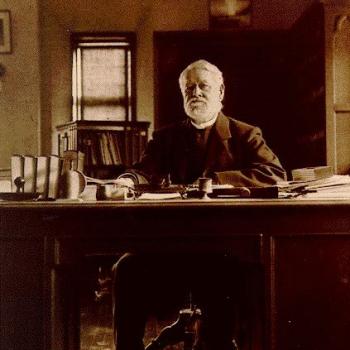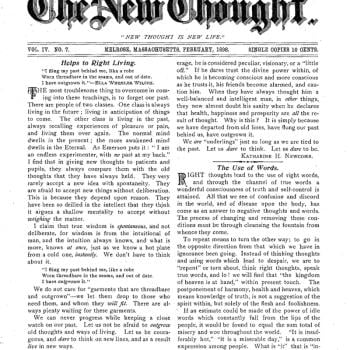Not long since, there was the Gospel of Judas, then there was Jesus’s Wife, and pretty soon, no doubt, we’ll have claims about another new gospel and its explosive revelations concerning early Christianity. When you wonder how to respond to those claims, I would like to offer you a very powerful rhetorical weapon. Remember the Protevangelium! If the title seems cumbersome, then just think of it as the Infancy Gospel of James. Whatever name we give it, the text is Kryptonite for faddish media claims about the New Testament.
It’s all a matter of chronology. When Professor Karen King introduced the controversial Jesus’s Wife fragment, she offered a scrupulous disclaimer right on her first page. “It does not … provide evidence that the historical Jesus was married, given the late date of the fragment and the probable date of original composition only in the second half of the second century.” In other words, no serious person believes that a document written in 175 or 200 (say) has anything new to say about events in 30AD, unless we can claim some kind of independent historical tradition, which is assuredly not in evidence here.
That straightforward caveat, though, did not deter the media from finding a smoking gun about Jesus’s marital status. Even if they are writing in 175 or 200, journalists assume, that is still evidence about what the Early Church believed, and they had reason to know. Early is Early. Realistically too, most future gospel-related finds are likely to stem from a similar period, roughly 150-230, one of enormous creativity in the very diverse shades of the Early Christian movement. Judas itself is probably from between 150 and 180. If it’s late second century, then, it surely retains vital clues about the Hidden Truths concerning Jesus and the apostles. There’s no smoke without fire! Or so the media believe.
Now, though, let’s turn to the Protevangelium, the so-called “First Gospel”. If you have never heard of it, you certainly know some of its teachings, as it is one of the absolutely primary influences on European medieval art, on painting and stained glass, and it retains an overwhelming influence on Catholic teachings about the Virgin Mary. Notionally written by Jesus’s brother James, this pseudo-Gospel is a charming collection of fantastic stories about Mary’s birth and background. If it was a Marvel comic, we’d call it an origin story. In essence, it takes the canonical stories about the births of John the Baptist and Jesus, and applies them to Mary. It describes the shame of Mary’s aged but long childless parents Joachim and Anna, and Anna’s miraculous conception. When you visit a European cathedral and see pictures of the very aged Joseph being married to a sprightly young Mary, you are seeing the influence of the Protevangelium. When you see depictions of Joachim and Anna, you are evoking the Protevangelium. And likewise when painters show Mary giving birth to Jesus in a cave. (Just to be technical, Western artists are generally getting the material not from the Protevangelium first-hand but rather from a derivative later source called Pseudo-Matthew, but the basic point remains).
Think of the Protevangelium as a historical novel, but not by an author who has done any great research. Errors about Judaism and first century Palestine abound. (No, the real Mary would not have started life as a consecrated virgin in the Temple). But why complain? It’s a romance, and it has some lovely poetic passages, especially the “Lament of Anna.” You would be churlish to assume that it should be anything more than that, so take it for the fantasy it is. Only a fool would try to extract the slightest historical information from it, including the names of Mary’s parents.
But here’s the point. Unlike many other ancient Christian texts, we actually have an excellent idea when the Protevangelium was composed, because of external references to it, and the date is somewhere around 175. It can’t be much later than that, certainly not after 200. It might even be earlier: some scholars think the work was known to Justin Martyr, who died around 165, and who refers to Jesus’s birth in a cave. The Protevangelium is, in other words, from very much the same period as the “new” gospel texts and fragments that have turned up in recent years (including the celebrated Nag Hammadi texts). In fact, it’s demonstrably earlier than most, sometimes by several decades.
Despite its very early date, then, the Protevangelium contains not a word of historical truth about the time of Jesus or Mary, and no scholar has ever claimed it does, at least in modern times.
What the work does however show is that already by this period, Christians were falling over themselves to try and fill in the gaps they felt existed about that now-distant age, and they were unrestrained by any concerns about writing sober or accurate history. They were producing what we can only call fantasy fiction. In some cases, the content reflected the teachings of the Great Church; in other instances not. The stories only served to illustrate those claims, as they were produced and debated in the late second century. In the process, they reinvented Jesus and Mary as fictional characters for their own literary and rhetorical purposes. In order to sound authoritative, authors mixed and matched passages and phrases from existing, known, scriptures. They especially plundered the four canonical Gospels, which already by the early date of the Protevangelium were regarded as the gold standard for historical writing about Jesus’s time.
The next time someone claims a new gospel discovery from the late second or third century, and uses it to reveal the “Real Jesus”, just ask them: why should this text be at all more reliable than the Protevangelium? In what sense does it claim to be accurate history, rather than pious romance or theological reflection? Does any shred of it suggest an independent first century tradition, or is it too wholly derivative of known canonical texts?
Or maybe the scholar in question really does believe in the wonders of Mary’s miraculous birth and childhood, in all their medieval splendor? They really do believe that Mary’s parents were Joachim and Anna? O sancta simplicitas!
After all, there’s no smoke without fire.












